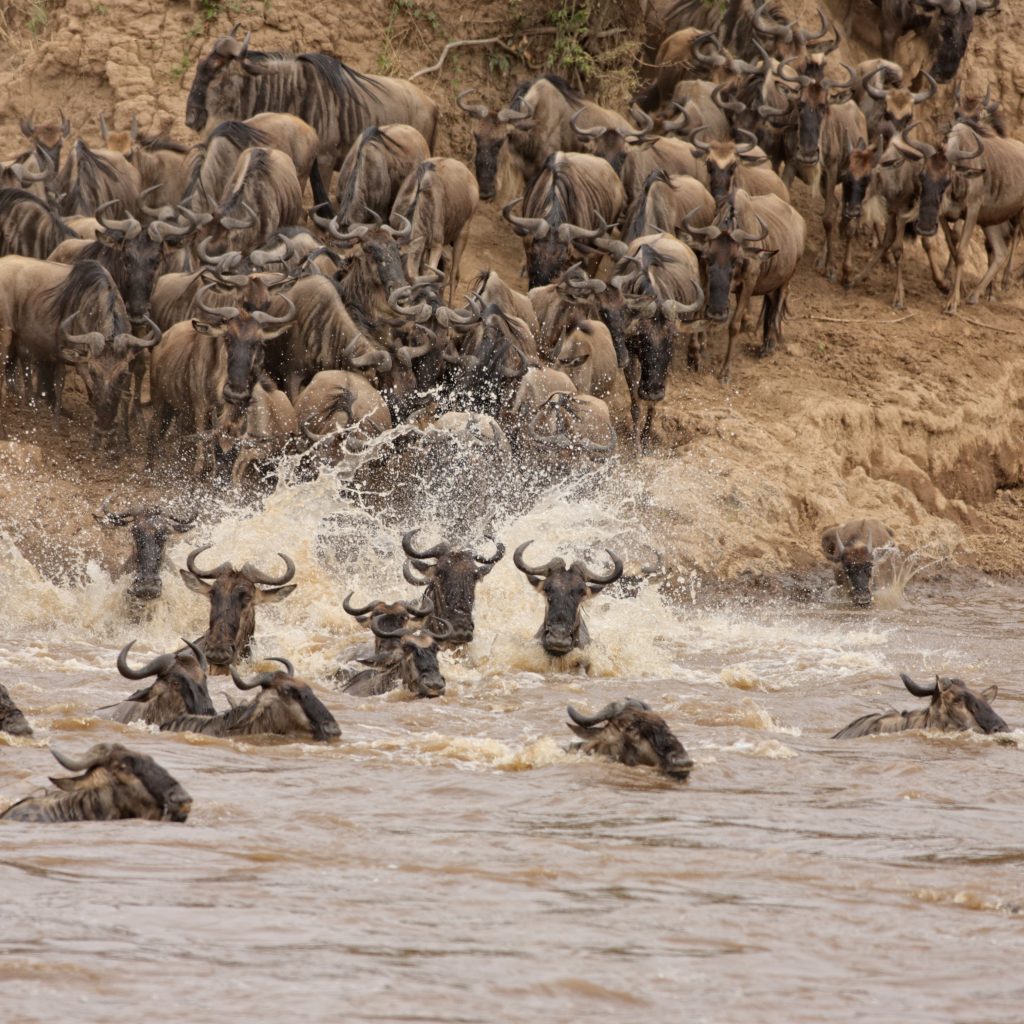02 Feb Unraveling The Wonders Of The Masai Mara Migration

Unraveling The Wonders Of The Masai Mara Migration
The Great Masai Mara Migration is a spectacular natural phenomenon, drawing millions of wildebeest, zebras, and other herbivores across the vast plains of East Africa. This awe-inspiring journey, which occurs annually between July and October, is one of the most iconic wildlife events on the planet.
This blog will delve into the intricacies of this remarkable migration, exploring its significance, the species involved, the journey’s challenges, and the impact on the ecosystem.
**Introduction:**
The Masai Mara Migration is a cyclical migration involving around 1.5 million wildebeest, hundreds of thousands of zebras, and various antelope species. This incredible journey spans approximately 1,800 miles, from the Serengeti National Park in Tanzania to the Masai Mara in Kenya. The migration is driven by the search for greener pastures and water sources, with the wildebeest following the seasonal rains.
**Timing and Seasonal Dynamics**
The migration is not a static event but rather a dynamic process dictated by the changing seasons. It typically kicks off in the Serengeti around November, as the first rains prompt the wildebeest to move northward. By January, the herds have reached the southern plains of the Masai Mara, where they graze in abundance. The migration peaks between July and September when the herds cross the Mara River, a spectacle renowned for its dramatic river crossings and encounters with predators.
**The Route:**
The migration follows a circular route, known as the Great Wildebeest Migration Circuit. It begins in the southern Serengeti, where the wildebeest give birth to their calves during the calving season. As the dry season sets in and resources become scarce, the massive herds start their trek northwards, crossing the Grumeti and Mara rivers in a breathtaking display of nature’s power.
**Challenges and Dangers:**
The migration is not without its challenges. The river crossings, especially at the Mara River, are treacherous. Crocodiles lurk in the waters, waiting for an opportunity to snatch a meal. The steep banks and strong currents create a dramatic scene as the animals navigate the obstacles. Predators, including lions, hyenas, and cheetahs, closely follow the herds, capitalizing on the vulnerable young and weak.
**Ecological Impact:**
The ecological impact of the migration is profound. The constant movement of millions of animals plays a crucial role in shaping the landscape. The trampling of vegetation helps rejuvenate the grasslands, promoting fresh growth. The excrement of the animals acts as a natural fertilizer, enriching the soil. This cyclical process maintains a delicate balance in the ecosystem, benefiting both the flora and fauna of the region.
**Conservation Concerns:**
While the Masai Mara Migration is a testament to the wonders of the natural world, it is not immune to human-induced challenges. Habitat loss, climate change, and human-wildlife conflict pose threats to the sustainability of this phenomenon. Conservation efforts are crucial to ensuring the continued success of the migration and preserving the biodiversity of the region.
**Tourism Impact:**
The migration is a major draw for tourists, providing a unique and captivating wildlife experience. Safari enthusiasts and nature lovers from around the world flock to the Masai Mara to witness this extraordinary event. However, the influx of visitors also raises concerns about the potential impact on the environment and wildlife. Sustainable tourism practices are essential to mitigate these effects and ensure the long-term viability of the migration.
**Conclusion:**
The Masai Mara Migration is a testament to the resilience of nature and the intricate dance of life on the African savannah. As we marvel at the grandeur of this annual spectacle, it becomes imperative to recognize our role in preserving the delicate balance that allows such extraordinary events to unfold. Through understanding, appreciation, and conservation efforts, we can ensure that the Masai Mara Migration continues to captivate and inspire generations to come.

